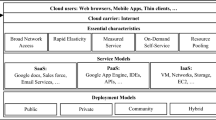Abstract
Software Defined Networking (SDN) is a new networking paradigm where control plane is decoupled from the forwarding plane. Nowadays, for the development of information technology large number of data traffic has been added in the global network each day. Due to proliferation of the Internet, e-commerce, video content and personalized cloud-based services higher channel bandwidth required to deliver larger data from one center to others. Lower data communication speed and fault tolerance are major factors for SDN which degrades network performance. This paper presents enhancement of data communication speed and fault tolerance over SDN using link aggregation control protocol (LACP). The result of this paper shows network performance has been improved by increasing approximately 31% data transmission speed over SDN using LACP. Moreover, this paper shows fault tolerance have been improved by LACP which prevents failure of any single component link from leading to breakdown the entire communications.







Similar content being viewed by others
References
Nunes, B., Mendonca, M., Nguyen, X.-N., Obraczka, K., Turletti, T., et al. (2014). A survey of software-defined networking: Past, present, and future of programmable networks. IEEE Communications Surveys and Tutorials, 16(3), 1617–1634.
Jarraya, Y., Madi, T., & Debbabi, M. (2014). A survey and a layered taxonomy of software defined networking. IEEE Communications Surveys and Tutorials, 16(4), 1955–1980.
Kreutz, D., Ramos, F. M., Verissimo, P. E., Rothenberg, C. E., Azodolmolky, S., & Uhlig, S. (2015). Software-defined networking: A comprehensive survey. Proceedings of the IEEE, 103(1), 14–76.
Kobayashi, M., Seetharaman, S., Parulkar, G., Appenzeller, G., Little, J., Van Reijendam, J., et al. (2014). Maturing of openflow and software-defined networking through deployments. Computer Networks, 61, 151–175.
Leng, B., Huang, L., Wang, X., Xu, H., & Zhang, Y. (2015). A mechanism for reducing flow tables in software defined network. In IEEE international conference on communications (ICC) (pp. 5302–5307). IEEE.
Yoon, C., Park, T., Lee, S., Kang, H., Shin, S., & Zhang, Z. (2015). Enabling security functions with SDN: A feasibility study. Computer Networks, 85, 19–35.
Network world, gartner: 10 critical it trends for the next five years. Available: http://www.networkworld.com/news/2012/102212gartner-trends-263594.html. Accessed November 20, 2015.
M.t. Review, 10 emerging technologies: Tr10: Software-defined networking. Available: http://www2.technologyreview.com/article/412194/tr10software-defined-networking. Accessed November 20, 2015.
Enterprise networking, IDC: SDN a 2 billion market by 2016. Available: http://www.enterprisenetworkingplanet.com/datacenter/-idcsdn-a-2-billion-market-by-2016.html. Accessed October 25, 2016.
Bitar, N., Gringeri, S., & Xia, T. J. (2013). Technologies and protocols for data center and cloud networking. IEEE Communications Magazine, 51(9), 24–31.
Pongsakorn, U., Kohei, I., Putchong, U., Susumu, D., & Hirotake, A. (2014). Designing of SDN-assisted bandwidth and latency aware route allocation. Journal of Information Processing Society of Japan, 2014(2), 1–7.
Li, K., Guo, W., Zhang, W., Wen, Y., Li, C., & Hu, W. (2014). QoE-based bandwidth allocation with SDN in FTTH networks. In 2014 IEEE network operations and management symposium (NOMS) (pp. 1–8). IEEE.
Pfeiffenberger, T., Du, J. L., Arruda, P. B., & Anzaloni, A. (2015). Reliable and flexible communications for power systems: fault-tolerant multicast with SDN/OpenFlow. In 7th international conference on new technologies, mobility and security (NTMS) (pp. 1–6). IEEE.
Chen, J., Chen, J., Xu, F., Yin, M., & Zhang, W. (2015). When software defined networks meet fault tolerance: A survey. In International conference on algorithms and architectures for parallel processing (pp. 351–368). Springer International Publishing.
Kim, D., & Gil, J. M. (2015). Reliable and fault-tolerant software-defined network operations scheme for remote 3D printing. Journal of Electronic Materials, 44(3), 804–814.
Link Aggregation Control Protocol (LACP) (802.3ad) for Gigabit Interfaces. Available: http://www.cisco.com/c/en/us/td/docs/ios/12_2sb/feature/guide/gigeth.html. Accessed August 27, 2016.
Link Aggregation According to IEEE Standard 802.3ad Online. Available: https://www.google.com.bd/url?sa=trct=jq=esrc=ssource=webcd=3cad=rjauact=8ved=0ahUKEwjEk5GQ7aJAhVXCI4KHR7pAjUQFgg3MAIurl=http. Accessed November 20, 2015.
OMNeT++ Discrete Event Simulator. Available: https://omnetpp.org/. Accessed September 25, 2016.
EstiNet 9.0 | Simulator. Available: http://www.estinet.com/ns/?page_id=21140. Accessed September 30, 2016.
OFNet-Quick User Guide. Available: http://sdninsights.org/. Accessed October 19, 2016.
MaxiNet: Distributed Network Emulation. Available: https://maxinet.github.io/. Accessed November 8, 2016.
NS-3. Available: https://www.nsnam.org/. Accessed November 8, 2016.
Mininet: An Instant Virtual Network on your Laptop (or other PC) - Mininet. Available: http://mininet.org/. Accessed June 15, 2016.
Keti, F., & Askar, S. (2015). Emulation of software defined networks using mininet in different simulation environments. In 6th international conference on in intelligent systems, modeling and simulation (ISMS) (pp. 205–210). IEEE.
McKeown, N., Anderson, T., Balakrishnan, H., Parulkar, G., Peterson, L., Rexford, J., et al. (2008). OpenFlow: Enabling innovation in campus networks. ACM SIGCOMM Computer Communication Review, 38(2), 69–74.
osrg/ryu. github. Available: https://github.com/osrg/ryu. Accessed November 15, 2015.
Bonding. Available: http://www.linuxfoundation.org/collaborate/workgroups/-networking/bonding. Accessed June 15, 2016.
Author information
Authors and Affiliations
Corresponding author
Additional information
Publisher's Note
Springer Nature remains neutral with regard to jurisdictional claims in published maps and institutional affiliations.
Rights and permissions
About this article
Cite this article
Shamim, S.M., Badrul Alam Miah, M. & Islam, N. Data Communication Speed and Network Fault Tolerant Enhancement over Software Defined Networking. Wireless Pers Commun 101, 1807–1816 (2018). https://doi.org/10.1007/s11277-018-5759-5
Published:
Issue Date:
DOI: https://doi.org/10.1007/s11277-018-5759-5




